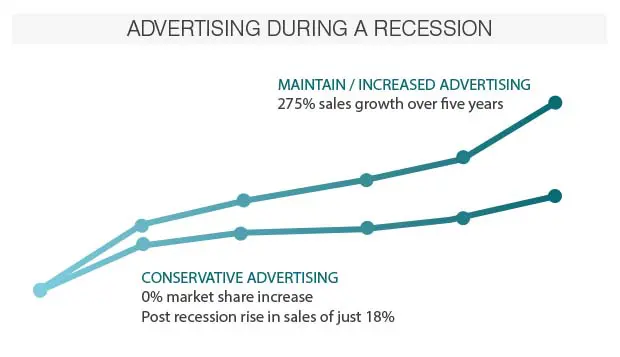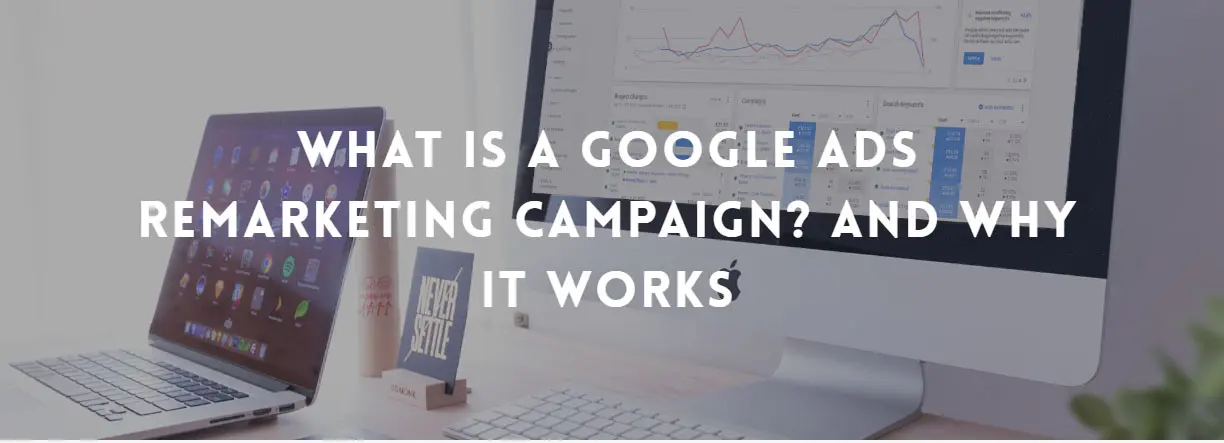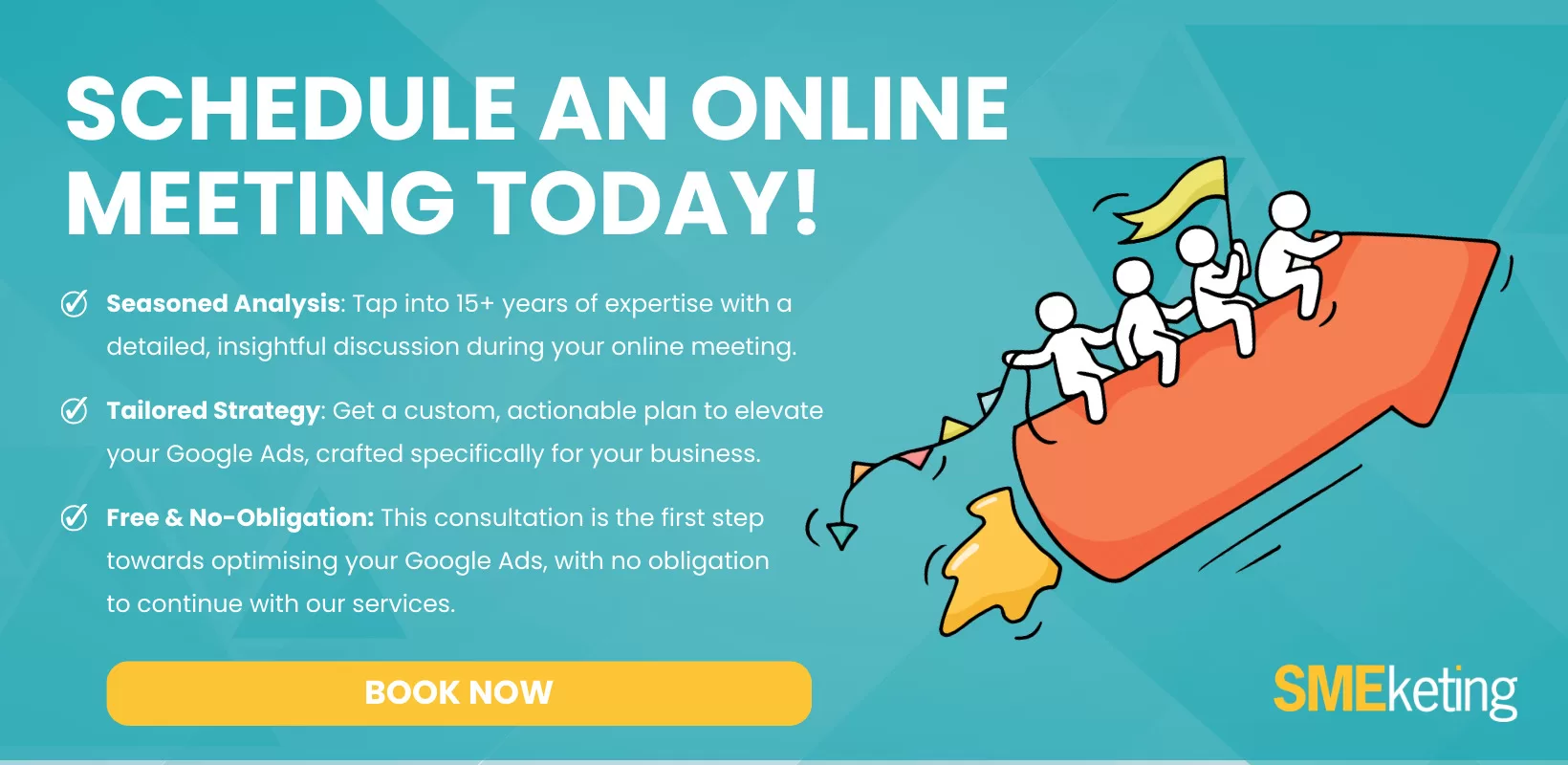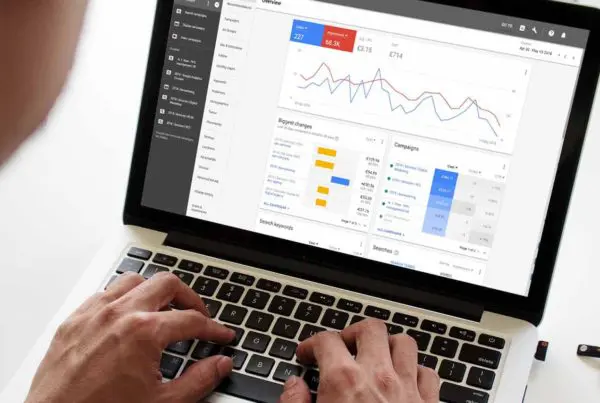When times get tough, businesses always hunt for ways to lean down. That means laying off staff, focusing on the most lucrative sectors, and cutting overheads. First on the chopping block are advertising and marketing budgets – they’re seen as a discretionary cost.
As the recession bites, businesses struggle to keep the lights on. Arguing for further ad spending seems foolhardy; consumers are, after all, getting stricter with their spending priorities, reducing non-essential purchases.
“Why bother wasting money on ad spending?” goes the conventional wisdom. Except, it couldn’t be more wrong.
Following the supply chain shocks of COVID-19, the mass retirement of baby boomers, and the war in Ukraine, it’s little surprise businesses are being battered in the tumultuous economic waters. For much of the world, a recession is already here or will arrive shortly.
During such periods, our conservative instincts kick in – cut spending, slash advertising, close your Google Ads account. In this post, I’m going to explain why that would be a colossal mistake; and why advertising in a recession may be the smartest business decision you ever make.
Why you should always advertise in a recession
Companies that advertise during periods of economic decline see substantial increases in sales compared to their counterparts.
In one example, McGraw-Hill analysed 600 companies from 1981 to 1985. During this period, companies that maintained or increased advertising during the 1980-81 recession saw average sales grow 275% over the following five years. In contrast, those who played it conservatively saw a 0% market share increase and a post-recession rise in sales of only 18%.
That makes some sense: after all, your competition for marketing slumps during the recession. As consumers forget about competing brands, your brand can become lodged in their memory. Then, when the economy begins growing again, you’re perfectly placed to capitalise on your brand awareness. Furthermore, advertisers can stretch their money further with less competition across the media landscape.
Contrary to popular belief, consumer spending often increases during a recession. That’s primarily because recessions are short-lived (the average US recession in the past half-century was 11 months). So, while consumers are savvier with their purchasing decisions, transactions by no means dry up.
Here are some more examples:
- In the US, Post was the industry leader in cereals prior to the Great Depression. However, as the depression hit, they cut their advertising budget, whereas Kellogg’s doubled its spending (especially in new media like radio). Kellogg overtook Post becoming the new industry leader; Post never recovered.
- In the 1990-91 recession, as McDonald’s cut back on advertising, Pizza Hut and Taco Bell took a different approach. They saw sales increase by 61% and 40%, respectively; McDonald’s sales declined by 28%.
- During the 2009 recession, Amazon continued to innovate, marketing its new products to customers. Their sales grew by 28%, and eBooks began to outsell print books for the first time.
Learn from the history of marketing – invest in advertising during a recession, and chase the most innovative solution. For digital marketers, that means focusing their efforts on Google Ads.
Why digital marketing is critical in a recession
Gone are the days when traditional advertising held sway. While TV and radio are still important, the ubiquity of the internet has transformed the advertising landscape. That’s especially true in a recession. As people tighten their belts, they’re more likely to spend time online – and to purchase products online.
Few online advertising platforms have the reach of Google Ads. Google is already the most-visited domain in the world, controlling about 75% of the search share. Through their network, you can reach more than 2 million websites and applications; the Google Display Network, in particular, reaches 90% of online consumers.
Whether it be search advertising or the Google Display Network, you can get in front of thousands of consumers, raising brand awareness and boosting sales.
How to run a Google Ads campaign during a recession
Holding your nerve and continuing to advertise during a recession can feel daunting. However, you shouldn’t think it’s business as usual. Tough times call for a shake-up of how you advertise. No longer can you go for the same keywords or employ the same tactics as normal.
In fact, with money tight, you want to squeeze every penny for benefits – optimising your campaigns and reaching the right audiences.
Here are some tips that can help:
1. Complete a review of your campaigns
First things first: you should complete a thorough investigation into your existing campaigns. Track their ROI, investigate their conversion rate, and determine how they could be further optimised.
You’re almost certainly wasting money somewhere in your campaign – nothing is airtight. Now more than ever, it’s crucial to reduce the wastage, ensuring you’re maximising your benefits.
Common areas where you could be wasting money are:
- Choosing expensive keywords
- Not creating a list of negative keywords you don’t want to show for
- Not running remarketing campaigns
- Not updating your ad copy and images
- Failing to take advantage of smart bidding strategies
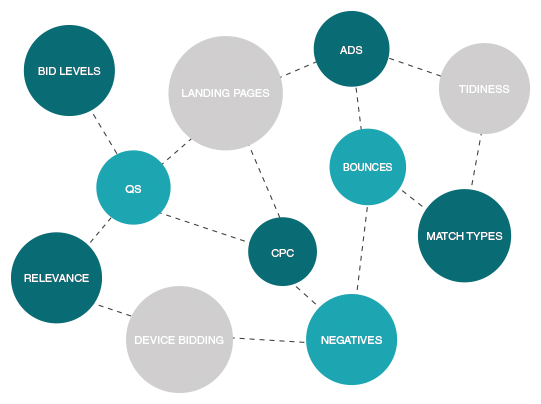
Factors to consider when looking for wasted spend
2. Reinvest poorly spent ad budget
Whatever you save from your review isn’t money for other areas of your business – remember, we’re maintaining or increasing your ad budget. You’ll want to reinvest your money in further ad campaigns.
Through Google Ads, there’s a vast array of options available. What you choose will depend on your business type. During the 2009 recession, Google released a document called “Top Tactics for Tough Times.” Over a decade later, much of the advice is still pertinent:
- Don’t waste money on irrelevant clicks
- Focus your money on high performers, e.g., existing customers
- Use value-related keywords
- Ensure your ad groups are targeted and relevant.
As you begin to reinvest your ad budget savings, consider these tips. Indeed, reorientating your messaging from “quality” to “affordability” can make a huge difference for some businesses.
3. Try A/B testing
When creating an ad, it’s hard to predict how consumers will react – what combination of colours, images, and text will yield the greatest result. That’s why you need to use A/B testing.
Using A/B testing, Google will show two or more versions of your ad to consumers. After a certain period, you’ll be able to assess which ad produced the greatest conversion rate. Running A/B testing, again and again, can further optimise your ad, increasing your ROI.
Nor is A/B testing only useful during a recession. It should be the gold standard for all advertising campaigns. In some cases, the change of a single colour or a new call-to-action can transform a campaign, boosting sales.
4. Create a remarketing campaign
Whether your focus is PPC advertising or SEO, the fundamental goal is building brand awareness and attracting first-time visitors. However, most people do not buy a product or service the first time they visit a site. It takes several interactions to trigger a conversion.
With a Google Ads remarketing campaign, you track user movements on your site and then show ads relating to their behaviour later. For example, if a customer looks at a product, you can show an ad for that specific product later that day. Or, if your product is consumable – like coffee beans – you can show ads or send reminders when they’ve almost used up their order.
Remarketing campaigns aim to increase your ROI; they’re about boosting the lifetime value of each customer. That could mean remarketing to existing customers or sending a special offer to someone who abandoned their cart.
Through remarketing strategies, you can further maximise the utility of every pound spent – going after the most lucrative customers.
Learn more about remarketing campaigns in this article below…
5. Identify opportunities in keywords
As competing businesses reduce ad spending, new opportunities arise through Google Ads. The cost of a keyword is determined, in part, by its competitiveness. Highly competitive keywords like “running shoes” are extremely valuable. But, as bids drop off, the cost of these keywords also decreases.
That means there’s a rare opportunity to go after keywords normally outside your budget. With much higher search volumes, appearing for these keywords can skyrocket your brand awareness and site visitors.
Also, following Google’s advice, you can reorientate your keywords towards more value-related terms. For example, “best value running shoes” or “affordable running shoes.” Together, these two strategies can yield impressive results.
Keep calm and carry on advertising
When a recession hits, it’s easy to panic. Like a ship in a storm, we change course, thinking we can outrun the weather by cutting our spending. That’s never true – only by increasing your ad spending can you hope to come out the other side in better shape.
With evermore consumers accessing online media, smart business owners are choosing Google Ads as their primary advertising platform. Millions of consumers see Google’s ads daily, creating unparalleled opportunities.
Think about a recession as an opportunity – you get to establish your brand with minimal competition, so you’re ready to move forward when the dust settles. Continue to advertise through Google Ads, and it might just transform your business.
- How to Do Keyword Research for Google Ads - January 15, 2024
- A Comprehensive Guide to Google Ads for B2C Businesses - January 8, 2024
- How to Write Calls to Action (CTAs) for Google Ads - December 25, 2023


